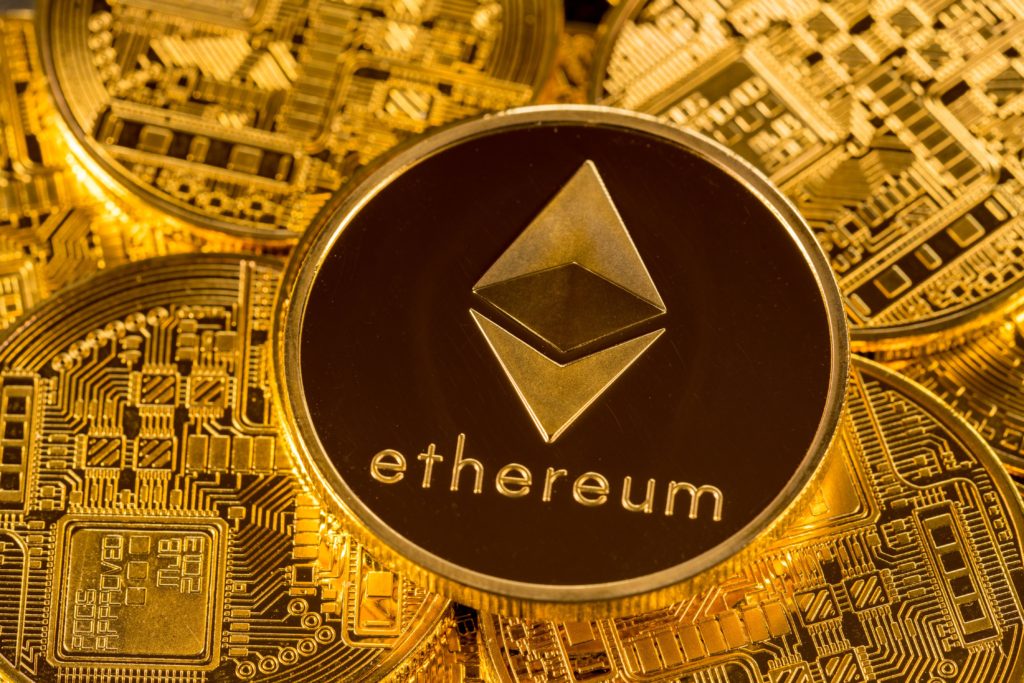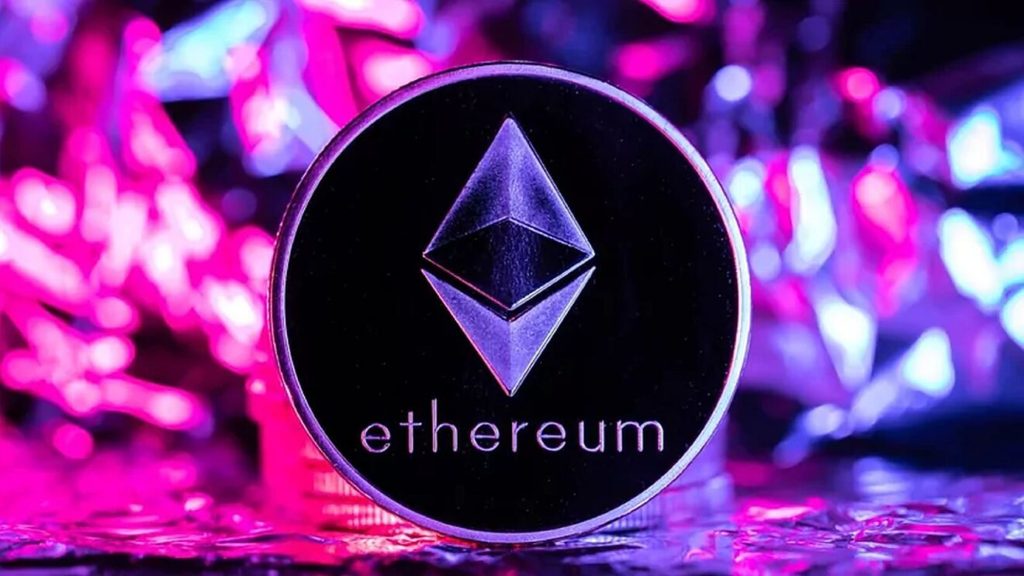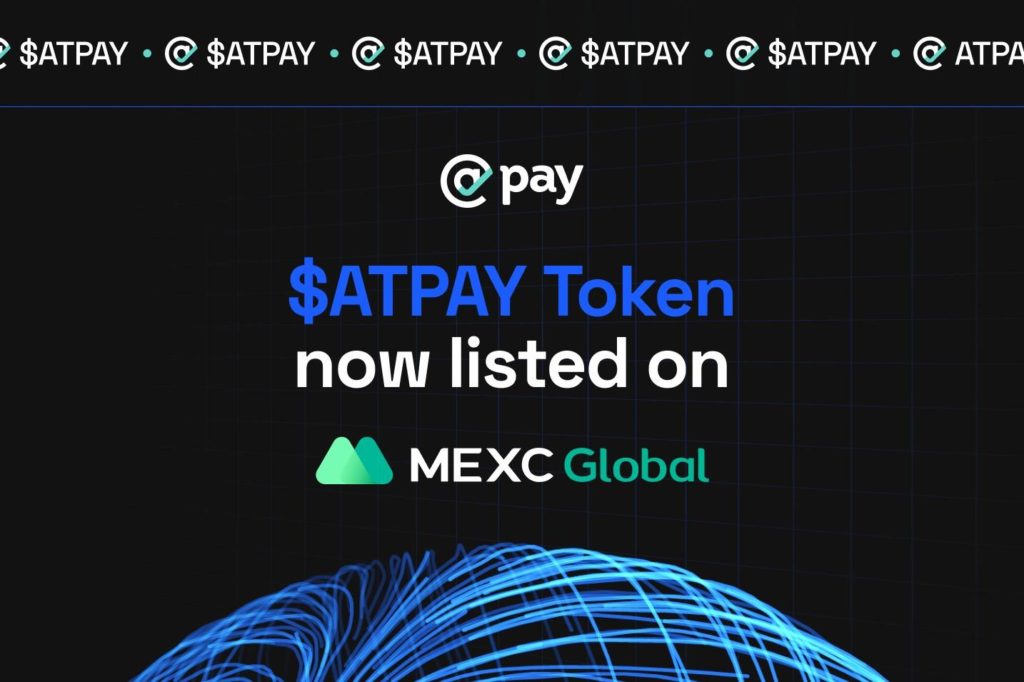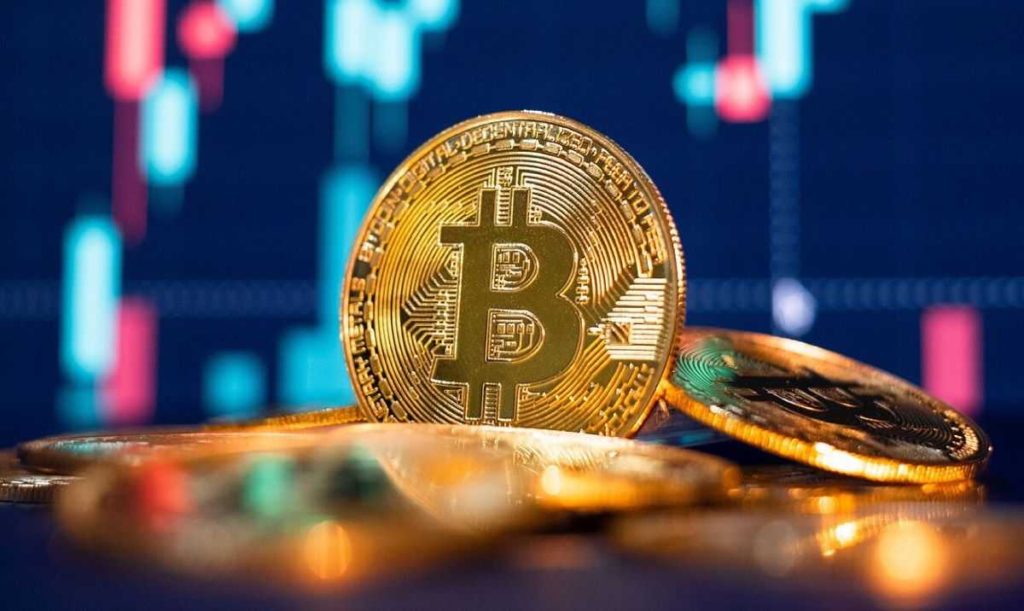The Biden White House has just released its first-ever framework on what crypto regulation in the U.S. should look like — including ways in which the financial services industry should evolve to make borderless transactions easier, and how to crack down on fraud in the digital asset space.
The new directives tap the muscle of existing regulators such as the Securities and Exchange Commission and the Commodity Futures Trading Commission, but nobody’s mandating anything yet. The long-awaited direction from Washington has, however, captured the attention of both the crypto industry as a whole — and of investors in this nascent asset class.
The framework follows an executive order issued in March, in which President Joe Biden called on federal agencies to examine the risks and benefits of cryptocurrencies and issue official reports on their findings.
For six months, government agencies have been working to develop their own frameworks and policy recommendations to address half a dozen priorities listed in the executive order: consumer and investor protection; promoting financial stability; countering illicit finance; U.S. leadership in the global financial system and economic competitiveness; financial inclusion; and responsible innovation. Together, these recommendations comprise the first, “whole-of-government approach” to regulating the industry.
Brian Deese, director of the National Economic Council, and national security advisor Jake Sullivan said in a statement that the new guidelines are meant to position the country as a leader in governance of the digital assets ecosystem at home and abroad.
Here are some of the key takeaways from the White House’s new crypto framework.
Fighting illicit finance
One section of the White House’s new framework on crypto regulation focuses on eliminating illegal activity in the industry — and the measures proposed appear to have real teeth.
“The President will evaluate whether to call upon Congress to amend the Bank Secrecy Act, anti-tip-off statutes, and laws against unlicensed money transmitting to apply explicitly to digital asset service providers — including digital asset exchanges and nonfungible token (NFT) platforms,” according to a White House fact sheet.
The president is also looking into whether to push Congress to raise the penalties for unlicensed money transmitting, as well as potentially amending certain federal statutes to allow the Department of Justice to prosecute digital asset crimes in any jurisdiction where a victim of those crimes is found.
In terms of next steps, “Treasury will complete an illicit finance risk assessment on decentralized finance by the end of February 2023 and an assessment on non-fungible tokens by July 2023,” reads the fact sheet.
Crime is rife in the digital asset sector. More than $1 billion in crypto has been lost to fraud since the start of 2021, according to research from the Federal Trade Commission.
Last month, the SEC said it charged 11 people for their roles in creating and promoting a fraudulent crypto pyramid and Ponzi scheme that raised more than $300 million from millions of retail investors worldwide, including in the United States. Meanwhile, in February, U.S. officials seized $3.6 billion worth of bitcoin — their biggest seizure of cryptocurrencies ever — related to the 2016 hack of crypto exchange Bitfinex.
A new kind of digital dollar
The framework also points to the potential for “significant benefits” from a U.S. central bank digital currency, or CBDC, which you can think of as a digital form of the U.S. dollar.
Right now, there are several different types of digital U.S. dollars.
Sitting in commercial bank accounts across the country are electronic U.S. dollars, which are partially backed by reserves, under a system known as fractional-reserve banking. As the name implies, the bank holds in its reserves a fraction of the bank’s deposit liabilities. Transferring this form of money from one bank to another or from one country to another operates on legacy financial rails.
There are also a spate of USD-pegged stablecoins, including Tether and USD Coin. Although critics have questioned whether tether has enough dollar reserves to back its currency, it remains the largest stablecoin on the planet. USD Coin is backed by fully reserved assets, redeemable on a 1:1 basis for U.S. dollars, and governed by Centre, a consortium of regulated financial institutions. It is also relatively easy to use no matter where you are.
Then there’s the hypothetical digital dollar that would be the Federal Reserve’s take on a CBDC. This would essentially just be a digital twin of the U.S. dollar: Fully regulated, under a central authority, and with the full faith and backing of the country’s central bank.
“A dollar in CBDC form is a liability of the central bank. The Federal Reserve has to pay you back,” said Ronit Ghose, who heads fintech and digital assets at Citi Global Insights.
Federal Reserve Chair Jerome Powell previously said the main incentive for the U.S. to launch its own central bank digital currency would be to eliminate the use case for crypto coins in America.
“You wouldn’t need stablecoins; you wouldn’t need cryptocurrencies, if you had a digital U.S. currency,” Powell said. “I think that’s one of the stronger arguments in its favor.”
In the White House’s new framework, it points to the fact that a U.S. CBDC could enable a payment system that is “more efficient, provides a foundation for further technological innovation, facilitates faster cross-border transactions, and is environmentally sustainable.”
“It could promote financial inclusion and equity by enabling access for a broad set of consumers,” continues the report.
To that end, the administration urges the Fed to continue its ongoing research, experimentation and evaluation of a CBDC.
Follow Crypto Intelligence on Google News to never miss a story
Ethereum’s biggest-ever upgrade just took effect, in what industry experts are calling a game changer for the entire crypto sector. Thus far, all signs suggest the so-called merge — which is designed to cut the cryptocurrency’s energy consumption by more than 99% — was a success.
The very first proof-of-stake block of transactions has finalized with a nearly 100% client participation rate. This was, by far, the best-case scenario.
The overhaul to the ethereum network fundamentally alters the way the blockchain secures its network and verifies transactions. Most of these changes are happening under the hood and the hallmark of a successful upgrade is if the end user doesn’t feel a difference in the hours and days ahead.
Cryptocurrencies such as ethereum and bitcoin are often criticized for the process of mining to generate new coins. Before the merge, both blockchains had their own vast network of miners all over the planet running highly specialized computers that crunched math equations in order to validate transactions. Proof-of-work uses a lot of energy, and it is one of the industry’s biggest targets for critiques.
But with the upgrade, ethereum has migrated to a system known as proof-of-stake, which swaps out miners for validators. Instead of running large banks of computers, validators leverage their existing cache of ether as a means to verify transactions and mint new tokens. This requires far less power than mining and experts say it will make the protocol both more secure and more sustainable.
The price of ether jumped following the merge. It is trading at around $1,640, up more than 3% in the last hour.
Nine teams and more than 100 developers worked on the merge for years. In the hours ahead, this decentralized network of programmers spread out across the planet will monitor the rollout and, if needed, debug as fast as possible.
Danny Ryan, a core developer based in Denver who has been working on the merge for five years, tells CNBC that they will be watching for any irregularities via both automated and manual monitoring systems. If issues come up, the corresponding team will debug and release a patch to users, but Ryan says they are pretty confident going into the merge given all the successful dry runs in the last few months.
“There might be some sort of small fire that gets put out very quickly,” said Ryan. “But the network as a whole — because of the redundancy across all this different software — will very likely be stable and fine.”
What changes
Part of why the merge is such a big deal has to do with optics.
Last week, the White House released a report warning that proof-of-work mining operations could get in the way of efforts to mitigate climate change. Slashing energy consumption by roughly 99.95% will not only establish greater sustainability for the network, but it will also go a long way toward lowering the barrier to entry for institutional investors, who struggled with the optics of contributing to the climate crisis.
Bank of America said in a note on Sept. 9 that the significant reduction in energy consumption post-merge “may enable some institutional investors to purchase the token that were previously prohibited from purchasing tokens that run on blockchains leveraging proof of work (PoW) consensus mechanisms.”
Analysts have said that institutional money entering the digital asset space at scale is critical to its future as an asset class.
The upgrade also changes the tokenomics around ethereum’s native coin, ether.
“Ether itself becomes a productive asset,” said Ryan. “It’s not something you might just speculate on, but it’s something that can earn returns.”
In this post-merge era, ether takes on some of the characteristics typical of a traditional financial asset, such as a certificate of a deposit, which pays interest to holders.
“It’s probably the lowest risk return inside of the ethereum ecosystem,” explained Ryan, who added that yield in other corners of decentralized finance, or DeFi, involve taking on smart contract risks and other types of counter-party risk.
The upgrade will also result in a significantly reduced supply of ether tokens in circulation, which could pave the way for ether to become a deflationary currency in the weeks and months ahead. Some investors say this could also help drive up the price of the token.
That reduced supply is the result of the new verification model that replaces miners with “validators.” The rewards for validators are much smaller than those that went to proof-of-work miners, meaning that less ether will be minted as a result of this upgrade. Validators are also required to lock up their tokens for a prolonged period of time, pulling ether out of circulation.
Additionally, as part of an upgrade that went into effect August 2021, the network is already “burning” or permanently destroying a portion of the digital currency that would otherwise be recycled back into circulation.
Developers say that enhanced network security is another critical feature of the upgrade.
“There are changes to the security guarantees of the chain,” said Sean Anderson of Sigma Prime.
Take a 51% attack, in which someone or a consortium of people control 51% or more of a cryptocurrency and subsequently weaponize that control to make changes to the blockchain.
Anderson says that it is much easier to recover from a 51% attack on a proof-of-stake network, because there are built-in mechanisms to financially punish malicious actors by reducing their stake.
“Because that economic asset is inside of the protocol, you get much better recovery mode, so you end up with a better kind of security profile,” Ryan told CNBC.
Follow Crypto Intelligence on Google News to never miss a story
Miami, Florida, 14th September, 2022, Chainwire
Canes Connection, an industry-leading organization dedicated to facilitating NIL opportunities for University of Miami (UM) Student Athletes, has announced that they will be integrating and utilizing the ReserveBlock RBX (reserveblock.io) blockchain protocol for NFTs.
The ReserveBlock Foundation will provide a pool of RBX masternodes to the Canes Connection that will allow participating UM Student-Athletes to be part of the RBX Network, verify transactions, and earn randomized block rewards. The RBX Network will also enable Canes Connection and participating UM Student-Athletes to issue interactive NFTs to sponsors and brands, increasing connectivity and utility within the Canes Connection community.
For the first time ever in NIL, Canes Connection will deploy a randomized block reward system for the exclusive benefit of all student-athletes participating in the Canes Connection NIL program by distributing earned rewards on a monthly basis. The RBX masternode deployment allows the Connection to create fair and equitable potential earnings for every participating student athlete regardless of fame, notoriety or playing status.
Through the use of self-executing (SENs) RBX smart contracts, the Connection will also issue interactive and dynamic NFTs for sponsors and fans to connect, collect and engage in unique experiences directly with student-athletes, as well as initiate ambassadorships for brands and businesses at the local and national level.
“We are excited to partner with RBX on this unique and exciting project,” said Zach Burr, Co-CEO of Canes Connection. “Those student-athletes opting into the Canes Connection will be a part of a best-in-class NFT platform, and will be able to easily create their own NFTs for their fans and sponsors.”
Each UM student-athlete within the program will also have access to a personal RBX core wallet and web wallet that will enable them to add additional masternodes on the network using block rewards if they choose.
With their personal RBX wallets, they can also create their very own NFTs without having to know or write code. Each participating student-athlete will be able to easily create NFTs and market them directly to fans and followers simply by sharing them on their very own social media accounts.
“We chose to partner with RBX because we believed their blockchain protocol will provide our student-athletes the most convenient and stress-free way to create and market their own NFTs, but more importantly, an incredible opportunity to earn passive block rewards via our pool of RBX masternodes,” said Brian Goldmeier, Co-CEO of Canes Connection.
The Canes Connection will also provide an “on-ramp” from its own website to a secondary marketplace, which will be powered by the RBX Network, for aftermarket NFT auctions as well as for special NFT drops. This first mover NIL program is expected to launch in October 2022 with additional details to follow in the coming weeks.
About the ReserveBlock RBX Network:
RBX is the first open-source decentralized NFT Centric Blockchain that enables true peer-to-peer operability for the minting and trading of NFTs with or without the need for a centralized authority. With an ecosystem that provides a full suite of on-chain tools, RBX reduces common frictions and burdens by providing an environment for anyone and everyone to participate with transparent trustless features all through a core wallet or web wallet by either validating on the network and/or writing a smart contract without the need-to-know code whatsoever. The RBX network is currently in mainnet beta.
For Canes Connection and RBX Further Inquiries:
Website:reserveblock.io
Discord: discord.com/invite/PnS2HRETDh
Twitter: twitter.com/ReserveBlockIO
Instagram: instagram.com/reserveblockio
Github: github.com/ReserveBlockIO
Canes Connection:
Website:canesconnection.com
Instagram: @canesconnection
Contacts
- Chelsea Oliver
- coliver@optimistconsulting.com
For years, ether could barely dream of challenging its big brother bitcoin. Now, its ambitions may be becoming more realistic.
The second-biggest cryptocurrency is taking market share from bitcoin ahead of an all-important “Merge” software upgrade that could sharply reduce the energy usage of its Ethereum blockchain, should the developers pull it off in coming days.
Bitcoin’s dominance, or its share of the crypto market’s market value, has slipped to 39.1% from this year’s peak of 47.5% in mid-June, according to data platform CoinMarketCap. Ether, on the other hand, has climbed to 20.5% from 16%.
The upstart is still a long way from overtaking bitcoin as the No.1 cryptocurrency, a reversal known to aficionados as “the flippening”. It’s made up ground, though; in January 2021, bitcoin reigned supreme at 72%, while ether occupied a slender 10%.
As for price, one ether is now worth 0.082 bitcoin , near December 2021 highs and sharply above the 2022 low of 0.049 in June.
“People are now viewing Ethereum as essentially a safe asset because they’ve seen the success of the network, they think it’s not going anywhere,” said Joseph Edwards, head of financial strategy at fund management firm Solrise Finance.
“There’s a permanency to how Ethereum is perceived in the crypto ecosystem.”
The Merge, expected to take place on Thursday after several delays, could lead to wider use of the blockchain, potentially boosting ether’s price – although nothing is certain in a capricious crypto market.
Ethereum forms the backbone of much of the “Web3” vision of an internet where crypto takes centre stage, powering applications involving crypto offshoots such as decentralised finance and non-fungible tokens – although this much-hyped dream is still unrealised.
Bitcoin and ether have both nearly halved this year on concerns about supersized interest rate hikes from central banks. Nonetheless, investors seem to like the look of the Merge, with ether up over 65% since the end of June. Bitcoin has barely budged in the same period.
“We’re going to see (ether’s) attractiveness to some investors who are concerned about energy consumption,” said Doug Schwenk, CEO of Digital Asset Research, although he cautioned that ether was still a long way behind bitcoin.
THE KING IS STRONG
The diminishing bitcoin dominance in crypto’s current bear market is a departure from previous market cycles when investors sold lesser tokens – “altcoins” – in favor of the more liquid and reliable bitcoin.
Dethroning the king is no easy feat, though.
Bitcoin is still by far the most well-known cryptocurrency. Mainstream investors who have dipped their toes in the crypto market since 2020 have tended to turn first to bitcoin, as the most liquid and widely-traded token.
Its market cap of $427 billion is still more than double Ether’s $210 billion, and market participants firmly believe the original digital coin remains the gold standard in crypto due to its limited supply.
Some market players say bitcoin’s grip on the crypto crown is still strong, even if it has to accept other contenders. For example, Hugo Xavier, CEO of K2 Trading Partners, said its dominance could improve to 50%-60% range if the crypto market turns bullish but it is unlikely to touch 70% again.
Follow Crypto Intelligence on Google News to never miss a story
Investors are barreling towards a catastrophic market collapse, and should buy cryptocurrencies before they usurp the US dollar and transform the entire financial system, Robert Kiyosaki told his followers in an email on Sunday.
“I predict the biggest crash in world history is coming,” the “Rich Dad Poor Dad” author and personal-finance guru told subscribers to the “Rich Dad Community” mailing list.
Kiyosaki forecasted a lengthy downturn, but reiterated his view that bear markets are the best times for investors to snag bargains and score outsized returns. He also asserted the US dollar would crash the existing economic system, leading to mainstream acceptance of crypto, as it isn’t controlled by the government.
“It’s not enough to WANT to get into crypto,” he said. “Now is the time you NEED to get into crypto, before the biggest economic crash in history.”
However, Kiyosaki dismissed the most popular crypto as worthless on his radio show in May. “I trade bitcoin. But I don’t think it has any value. I just play the game.”
Moreover, bitcoin and other digital coins have tumbled alongside stocks and other risk assets this year, suggesting many crypto fans aren’t fully convinced they’ll revolutionize global finance.
Kiyosaki has repeatedly warned of a sprawling bubble in asset prices, and cautioned it would end with a painful pop. He tweeted on August 30 that the crash was underway, pointing to the sliding prices of stocks, bitcoin, gold, silver, and real estate.
The doomsayer also issued some offbeat advice in June for investors looking to beat inflation. He recommended stockpiling canned goods such as tuna and baked beans, along with household goods including trash bags and toilet paper, to get ahead of price increases.
Fintech disruptor @Pay has announced their listing of their token ATPAY on MEXC and Raydium this Monday at 10 am UTC.
The app will begin launching to merchants and customers in Q4 2022. @Pay is a DEFI (Decentralized Finance) protocol that is the first BNPL (Buy Now Pay Later) platform built to integrate blockchain technology with its own cryptocurrency. @Pay is one of the largest projects in the DeFi space aiming to power millions of real-world transactions while taking on the multi-trillion dollar payments industry.
About ATPAY token
The @Pay token (ATPAY) is a Solana (SPL) based asset. The SPL token framework will allow a fast, scalable and efficient structure for the distribution, support and functionality of the native token.
The @Pay token is the token that powers the @Pay integrated rewards program available to all users that successfully complete their repayments in a timely fashion. The @Pay token can be used in various ways such as buying into a higher credit limit, used as currency to purchase products and services from @Pay merchants in the @Pay marketplace and, in time, able to vote on certain outcomes that can shape the outcome of the @Pay platform.
Token listing metrics:
- Listing will commence on 12 September 2022 at 10:00 am UTC on MEXC
- Total Token Supply 300 million
- Circulating Supply 100 million with the majority held by @Pay and subject to lock-ups. with the majority held by @Pay and subject to lock-ups.
From the date of distribution, ATPAY token holders with 200,000 or more tokens will be locked. These tokens will be unlocked annually as per the following schedule:
- 10% of the total @Pay tokens held by an owner will be unlocked 31 Dec 2022.
- 10% of the total @pay tokens held by an owner will be unlocked 31 Dec 2023.
- 40% of the total @pay tokens held by an owner will be unlocked 31 Dec 2024.
- The remaining balance of the total @pay tokens held by an owner will be unlocked 31 Dec 2025.
About the Project
@Pay aims to become a first of its kind platform for BNPL solutions, combining three emerging markets; Buy Now Pay Later (BNPL), Crypto and Traditional Currency, and Blockchain and Smart Contracts.
@Pay is taking on the global payments and BNPL industry which is projected to reach 233 billion by 2025* (consensus.gov). Even if it only takes 1% market share; annual turnover could reach $2.3billion USD. That’s hundreds and thousands of transactions powered by @Pay’s blockchain technology.
@Pay aims to be a key participant in offering decentralised finance (DeFi) eCommerce and in-store solutions to shoppers & merchants. @Pay will also allow users to pay for their shopping with any traditional currency (fiat) or approved cryptocurrency they hold in their wallets. Shoppers and merchants will be rewarded with tokens for all transactions and repayments. This places @Pay in the unique position to become the premier BNPL solution for gaming platforms, esports, NFT marketplaces, Web 3 businesses whilst also targeting traditional BNPL merchants.
@Pay has also already signed up over 500 affiliate merchants. This includes major retailers such as adidas, Calvin Klein, JD Sports, North Face, Dior, F1, Fanatics, Coach, GAP and Lacoste amongst others. This is in addition to industry partnerships such as MetaRun, Fomolabs, Algorand, Solana and more. Other key partnerships in the works include Binance Pay and global football clubs.
Further, @Pay has developed its own APis allowing @Pay to be easily integrated into merchant payment gateways giving it access to thousands and thousands of merchants around the World.
Here’s a summary of what users can expect of this unique ecosystem that stands out from its competitors:
- Pay with Cash or crypto
- Buy now – Repay in 4 instalments
- No interest or late fees
- Earn rewards for completing repayments on time
- Earn rewards in crypto
- Stake
The @Pay protocol and app will earn revenue in 4 key ways:
- Merchant fees for BNPL – a merchant pays @Pay 4-8% of every transaction when a shopper chooses to purchase a good or service using the BNPL feature.
- Affiliate merchants’ payments. @Pay receives 5-10% of the transaction amount for driving shopper traffic..
- Monthly account keeping fee of $8 payable by anyone that has repayments outstanding from using the BNPL feature..
- Crypto Pay transaction fees – 1% fee of the transaction amount.
All this is made possible by launching and growing usage of our app. The app will begin launching to merchants and customers in Q4 2022. A single app for shoppers and retailers to manage all their crypto and cash payments seamlessly. Switching between cash and crypto is as easy and fast as changing channels on your tv. It’s a little bit of @Pay magic.
Alongside the app launch, @Pay business is set to launch in October; unlocking the ability for businesses across Australia and overseas to be able to accept cash payments in store and have these converted into crypto, instantly. @Pay business will be great for professionals (doctors, lawyers, accountants , beauty therapists, tradespersons etc..
Then we are rolling out with crypto BNPL late this year, followed by a virtual card early next year. Jump on in early into this thrilling project! Get MEXC and buy now
Follow Crypto Intelligence on Google News to never miss a story
Bitcoin rallied the most since July, breaking out of the narrowest trading range in about two years, as a drop in the dollar renewed demand for battered risk assets worldwide.
The largest cryptocurrency by market value advanced as much as 10.1% to $21,341 as of 12:05 p.m. in New York. The increase was the most since July 19. Bitcoin is outperforming most of the other top tokens such as Ether and Cardano. Bitcoin and Ether are still both down about 50% this year.
“It’s too early to predict that we are approaching another bull run, but if Bitcoin regains a higher support level between $22,000-$25,000 then it may boost investor confidence and ease off the selling pressure across crypto assets,” said Tarusha Mittal, co-founder of crypto staking platform UniFarm. “Given the fact that central banks around the world remain cautious due to the high inflation numbers, the current surge in the crypto market might be short-lived,” she adds.
The Bloomberg Dollar Spot Index tumbled 0.9% on Friday after surging to the highest on record this week. Every Group-of-10 currency strengthened against the greenback, with the risk-sensitive Australian dollar and Norwegian krone leading gains.
Bitcoin has been stuck in the tightest trading range in almost two years in September, in part reflecting uncertainty about how far central banks will go in raising interest rates in the face of a slowing global economy. Amid the lack of direction, some analysts have pointed to activity in futures markets as suggesting Bitcoin may be poised to break out.
Riyad Carey, an analyst at crypto researcher Kaiko, highlighted a jump in open interest in Bitcoin futures on some of the biggest exchanges.
“It appears that there was a bit of pent up demand for BTC (and BTC volatility), which has traded in a relatively tight range for the past couple months with decreasing volatility,” Carey said in a direct message over Twitter.
Friday’s move was unusual in that Bitcoin outperformed almost all other top tokens tracked by Bloomberg. The MVIS CryptoComparte Digital Assets 100 Index advanced 6.1%. Smaller so-called altcoins typically fluctuate by larger magnitudes than Bitcoin, the industry’s bellwether.
Follow Crypto Intelligence on Google News to never miss a story
The CEO of cryptocurrency lending platform Celsius Network and state authorities were allegedly deceived regarding the company’s financial standing and compliance with securities rules, according to the Vermont Department of Financial Regulation, or DFR, Cointelegraph reports.
Vermont’s financial regulator claimed in a document filed on Wednesday with the U.S. Bankruptcy Court in the Southern District of New York that Celsius and Mashinsky “made false and misleading claims to investors” that allegedly downplayed worries about market volatility and enticed small-scale investors to keep their money on the platform or make new investments, Cointelegraph stated.
Despite claiming to have enough money in reserves to lessen the risk of insolvency, Celsius and its CEO “lacked sufficient assets to repay its commitments,” according to the state regulator.
Mashinsky’s tweets and corporate blogs from the beginning of 2021 were referenced by the DFR as evidence that the platform was “profitable or financially healthy” despite suffering “catastrophic losses” and failing to generate enough income to support returns.
The regulator also stated that it had learned of allegations that were based on solid evidence that Celsius and its management team “engaged in the inappropriate manipulation of the price of the CEL token,” utilising investor cash to buy extra tokens and giving many of them to depositors as interest.
Celsius boosted and supported the price of CEL by boosting its Net Position by hundreds of millions of dollars, falsely inflating the company’s CEL holdings on its balance sheet and financial accounts, according to DFR associate general counsel Ethan McLaughlin.
Liabilities would have outweighed assets since at least February 28, 2019, absent the Company’s Net Position in CEL. At the expense of retail investors, these methods might also have benefited Celsius
A probe into Celsius’ suspected price-fixing of CEL tokens is demanded by the financial watchdog since it “artificially inflated[ed] the worth of the company’s net position in CEL on its balance sheet and financial statements.” Despite the fact that Celsius formally filed for Chapter 11 bankruptcy in July, the DFR’s review of the platform’s balance sheet indicated that it might have been insolvent as early as May 13.
Follow Crypto Intelligence on Google News to never miss a story
The Federal Reserve’s new banking regulator outlined a broad agenda in a speech Wednesday that pushed for action on stablecoins, climate change preparations and both the safety and fairness of the finance industry.
Fed Governor Michael Barr, whose title of vice chair for supervision gives him broad powers over the nation’s banks, gave his first policy speech since being confirmed by the Senate.
Among his priorities: a push for Congress to enact comprehensive regulation over stablecoins, or cryptocurrencies pegged to other assets, often currencies.
He also said that next year the Fed will launch an exercise “to better assess the long-term, climate-related financial risks facing the largest institutions.”
And he said a push for a system that is not only financially sound but also fair, particularly to those at the lower end of the income spectrum with less access to banking services, would be a major priority.
“Fairness is fundamental to financial oversight, and I am committed to using the tools of regulation, supervision, and enforcement so that businesses and households have access to the services they need, the information necessary to make their financial decisions, and protection from unfair treatment,” Barr said in a speech at the Brookings Institution in Washington, D.C.
Barr presides now over a financial system that is generally thought to be well capitalized but was still hit by market disruptions requiring Fed intervention in the early days of the Covid crisis. The rise of cryptocurrencies and stablecoins also has posed challenges for the Fed, which is exploring a potential digital currency of its own.
He called for increased scrutiny of the crypto industry and the risks that it poses.
“Stablecoins, like other unregulated private money, could pose financial stability risks,” Barr said. “I believe Congress should work expeditiously to pass much-needed legislation to bring stablecoins, particularly those designed to serve as a means of payment, inside the prudential regulatory perimeter.”
On climate change, Barr waded into an area that has drawn criticism from some Republican congressional leaders who believe the Fed is overstepping its mandate.
Barr said the Fed wants to understand the risks that climate events pose to the system, while acknowledging that the central bank’s interest on the issue is “important, but narrow.”
Along with the Office of the Comptroller of the Currency and the FDIC, the Fed is working up ways it wants banks to “identify, measure, monitor, and manage the financial risks of climate change. In addition, we are considering how to develop and implement climate risk scenario analyses.”
On the fairness issue, Barr said he wants a system that provides consumers with access to services and information to protect them from abuse.
“As innovative financial products develop and grow rapidly, excitement can outrun the proper assessment of risk,” he said. “As we have seen with the growth of crypto assets, in a rapidly rising and volatile market, participants may come to believe that they understand new products only to learn that they don’t, and then suffer significant losses.”
Barr said he also will work to ensure that banks that participate in crypto-related endeavors have risk controls in place.
Follow Crypto Intelligence on Google News to never miss a story
Crypto companies are reversing course on sports sponsorships — and European soccer’s governing body is just the latest victim.
Crypto.com backed out of a five-year sponsorship deal worth $100.6 million annually for the UEFA Champions League this summer.
A drop of over $2 trillion in value in the crypto markets from November to June, plus another major hit last week, has caused a course correction among crypto exchanges.
- Rival crypto exchange FTX reportedly pulled out of a jersey patch deal with the Los Angeles Angels. Another crypto company backed off a deal with the Washington Wizards.
- The bankruptcy of crypto exchange Voyager left a deal with the NWSL — one of the largest in the league’s history — in limbo. Voyager was also a partner of the Dallas Mavericks.
Crypto’s Big Sports Play
The canceled transactions represent a reversal on what had been the biggest emerging trend in sports deals: Crypto companies were spending billions of dollars on sports sponsorships.
The category rocketed to the NBA’s second-largest sponsorship category in the 2021-22 season, after being 43rd the previous year.
Crypto.com and FTX each made a major splash with an arena naming rights deal, with the former landing the home of the Los Angeles Lakers, Clippers, Kings, and Sparks in a 20-year, $700 million deal, and FTX snaring the Miami Heat’s arena for 19 years for $135 million.
Follow Crypto Intelligence on Google News to never miss a story













